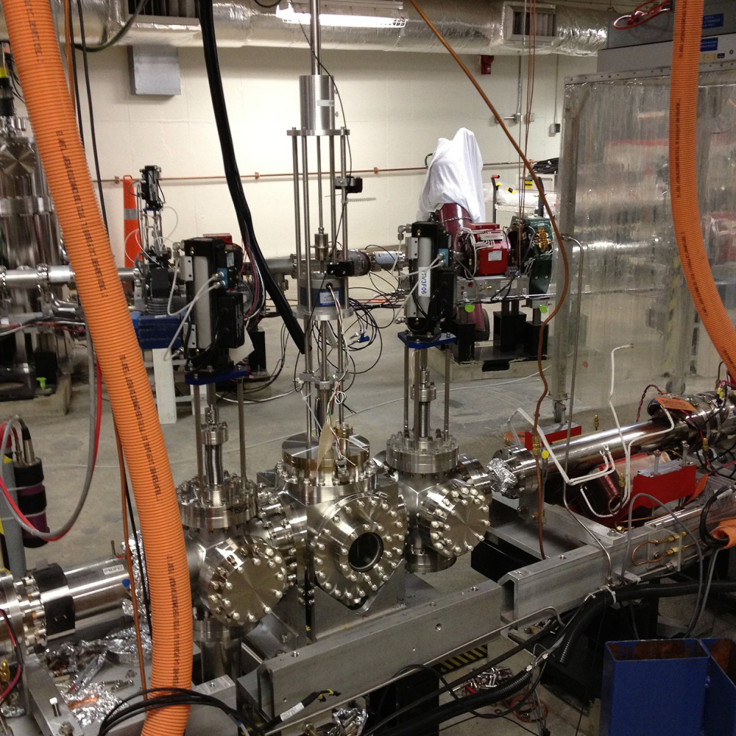DarkLight Experiment Hopes To Make Dark Matter ‘Visible’ As Researchers Look For A Mysterious Particle

Researchers from the Massachusetts Institute of Technology are launching a new experiment in an attempt to detect dark matter. DarkLight will test different detection theories for dark matter and hope to find a particle that acts like a photon, which travels at the speed of light but has mass.
Based on data collected by the recently retired Planck space telescope, dark matter makes up a larger percentage of the universe than normal matter, 26.8 percent vs. 4.5 percent, but it can only indirectly be observed. Researchers have only just begun to understand dark matter and its existence by observing its gravitational effects on other objects. Dark matter can be measured indirectly by observing galaxy rotation, galaxy clusters and its effect on light, such as gravitational lensing, the distortion of light from a distant galaxy as it travels through space.
The DarkLight project, developed by researchers from MIT and Virginia-based Jefferson National Accelerator Laboratory, aims to find a particle whose existence is only suggested by previous research.
The mystery particle (dubbed A or A Prime by researchers) is described as something like a “massive photon,” and the main theory suggests that it may explain the existence of dark matter. Photons have no mass and travel at the speed of light, but if there is such a thing as a massive photon, it would be a direct contradiction to the Standard Model and dramatically alter the world of physics.
Richard Milner, an MIT physics professor, said in a statement, “It’s totally beyond anything we understand about the physical world,” later adding, “It can have enormous consequences for our theories and our understanding. It would be absolutely groundbreaking in physics.”
In order to test this theory, the researchers have developed a device that shoots a narrow, high-powered beam of electrons that could detect A Prime. According to the researchers, previous experiments have suggested this particle has a specific energy and researchers hope to find two particles that A Prime decays into, and in the proper portion indicated in the theory being tested by researchers.
It will take at least four years -- two years of experimentation and preparation and another two years to smash electrons and collect data -- before researchers can determine if A Prime exists. DarkLight does have other uses, and when it is not hunting for the mystery particle, it could help solve other physics mysteries. According to MIT, the beam can be used to determine the reaction of carbon and helium fusion, which produces oxygen. The research was published in the journal Physical Review Letters.
© Copyright IBTimes 2024. All rights reserved.








